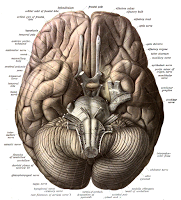Autism spectrum disorder is a condition that affects the nervous system. While the characteristics of this complex disorder vary from social difficulties, speech problems, repetitive behaviors, sensory processing issues, and intense interests, individuals with autism can often live wholesome, quality lives.
Your child is unique and special, whether the MCHAT test for autism in children highlights autistic traits or not. But suppose an autism diagnosis has been reached. In that case, occupational therapy and eventual cognitive-behavioral therapies prove beneficial and effective in improving quality of life, even for autistic children who need a high level of care.
Nevertheless, if you’re the proud parent of a neurodiverse little one, you might be on the hunt for resources and tools to help your child thrive. With this, therapeutic activities are an excellent tool that encourages the development of essential skills that will prove valuable throughout life.
Kinetic Sand Play
Kinetic sand is a fantastic sensory tool for children on the spectrum. Moreover, even adults on the spectrum adore the sensory bliss that playing with this sand creates. As a result, it will eventually become a tool to help keep sensory overloads at bay and help manage the severity when these instances occur.
All you will need is a large shallow bucket or tray and some kinetic sand for this activity. Let your little one dig their fingers in and mold the sand to their heart’s content.
Create A Safe, Sensory Time-Out Space
Sensory overloads, or sensory meltdowns, occur in children and adults on the spectrum. This happens when one or more sensory system is overwhelmed. Creating a sensory time-out space is wise because autistic children are extremely sensitive to their environments.
This space must dampen sensory experiences as much as possible, so consider making a dark cupboard comfortable or a corner of their room. The space needs to be safe and secure; your child must easily enter and exit their sensory time-out area without any difficulty.
Teaching your child to seek out their sensory corner is an excellent way to help them manage their own sensory processing difficulties and enhance their independence as they grow.
Sensory Swing
A sensory swing is a swing made with fabric; it provides a pretty secure experience. Because of the secure design and the movement of the swing, a sensory swing can be exceptionally calming and soothing.
This is also a pretty affordable installation for your little ones’ playroom. Alternatively, you can also look into DIY sensory swing ideas.
Headphones And Soothing Sounds
Noise-canceling headphones are another excellent tool for children and adults on the spectrum. When sound processing challenges are a concern, headphones can dampen sounds even when no music is playing.
While specialized earplugs are on the market, it’s sometimes necessary to eliminate sounds completely.
But while many might think that sound sensitivities might mean music on headphones would be unpleasant, autistic children and adults typically opt for louder volume on headphones. Even so, be sure to only use a safe volume for your child’s headphones.
Playing calming and soothing music or white noise sounds can help manage sensory overloads and otherwise serve as a relaxing activity.










